16 brilliant uses for all that mint (plus how to stop it taking over your garden)
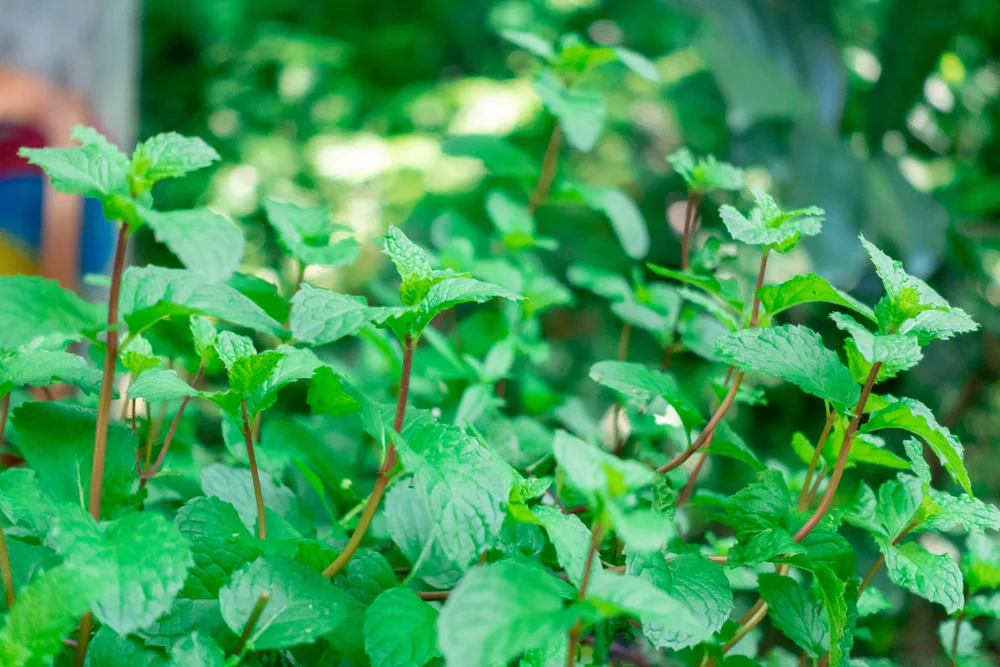
Mint is aromatic and pleasantly intoxicating, with cooling/soothing menthol flavors which have both culinary and medicinal properties.
Plus, it is a perennial herb that is easy to grow. Yet, it is notorious for escaping garden boundaries in search of more space to expand its horizons.
In fact, it can spread 4″ per month, or more! This may not seem like much, but the more it gets rooted in a particular area, the faster it will grow and sprawl as new plants are created in the process – leaving you wondering if growing mint is worth the little effort involved.
It is.
For there is little to fear about a fragrant patch of mint, in the garden or potted in containers, as there are ways to limit their unlimited growth.
In its abundance you are sure to find your own reasons for letting mint thrive in your garden – whether you keep it for fresh mint ice cream, refreshing mint lemonade, or to attract more pollinating insects to your garden.
A short history of mint
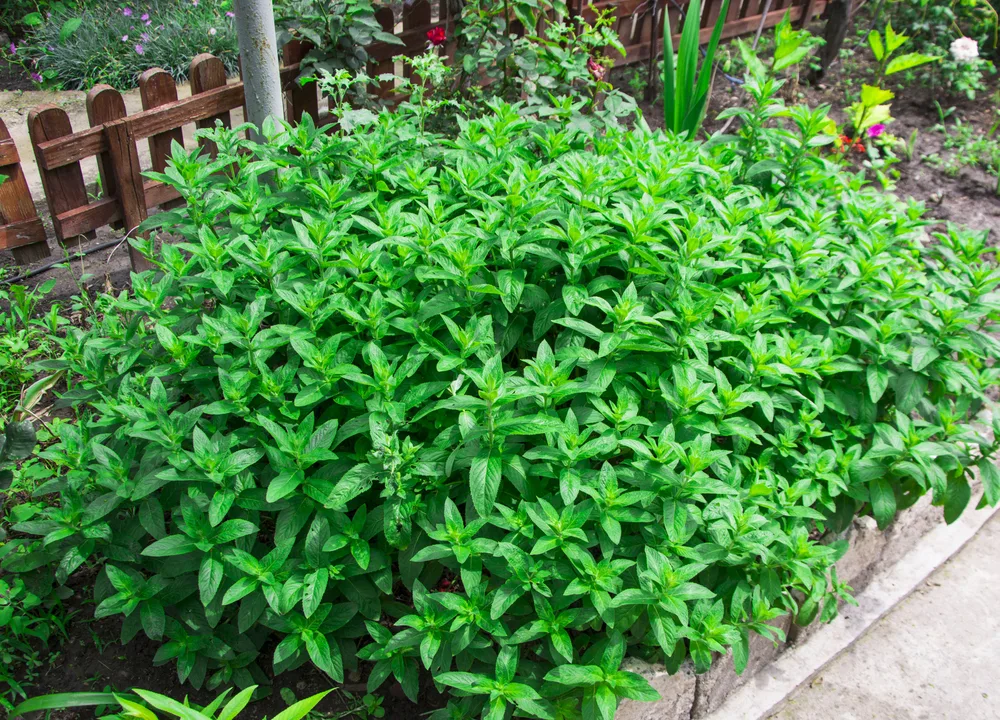
Mints (Mentha spp.) are wonderful herbs that have been used since ancient times for both culinary and medicinal purposes.
Its use as a medicinal oil has been documented as early as 410 AD. Romans used it for perfumes, as well as flavoring drinks and wine.
Along with lavender and sage, peppermint was considered a digestive aid in medieval times, such as it remains today.
It has also been said that the leaves of peppermint were dried and powdered, not only for herbal teas (only drink one or two mugs at a time, lest you feel nauseous), but for keeping teeth healthy and white.
Mint is also good for treating and soothing symptoms of the common cold. Being an aromatic decongestant that helps to clear the lungs.
Go easy on the amount of mint you use at once, though. You don’t want to overdo it!
Varieties of mint
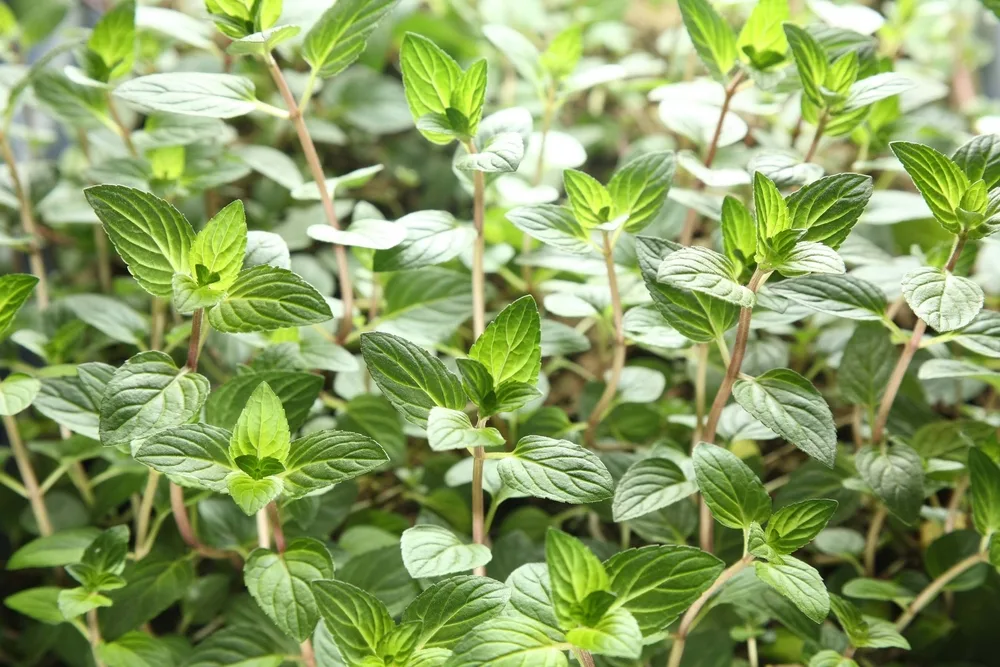
With over 600 varieties of garden mint to choose from, it is hard to stick to growing just one.
While some of them can be used interchangeably, many are noted for their specific flavors. You will need to explore them on your own to discover which ones you like the best.
The most common garden mints are:
- peppermint
- spearmint
- chocolate mint
- apple mint (woolly mint)
- pineapple mint
- lavender mint
- ginger mint
- strawberry mint
- catmint
- horsemint
- Corsican mint
- Egyptian mint
- pennyroyal
- watermint
This list is just the beginning, to help you get a taste for the diverse mintiness that is out there. I encourage you to explore what grows wild in your area as well, provided you know how to identify mint. The flavors of wild foraged mints may be more mild (or more intense, it depends on the growing conditions) and suitable for adding to your plantain and nettle herbal tea.
You will be pleased to know that mint is a wonderful perennial to have in your garden. You can harvest it year after year, with reliable results.
Never fear: it will not take over your garden, so long as you maintain your mint patch by harvesting regularly and containing the sprawling roots.
Mint for eating
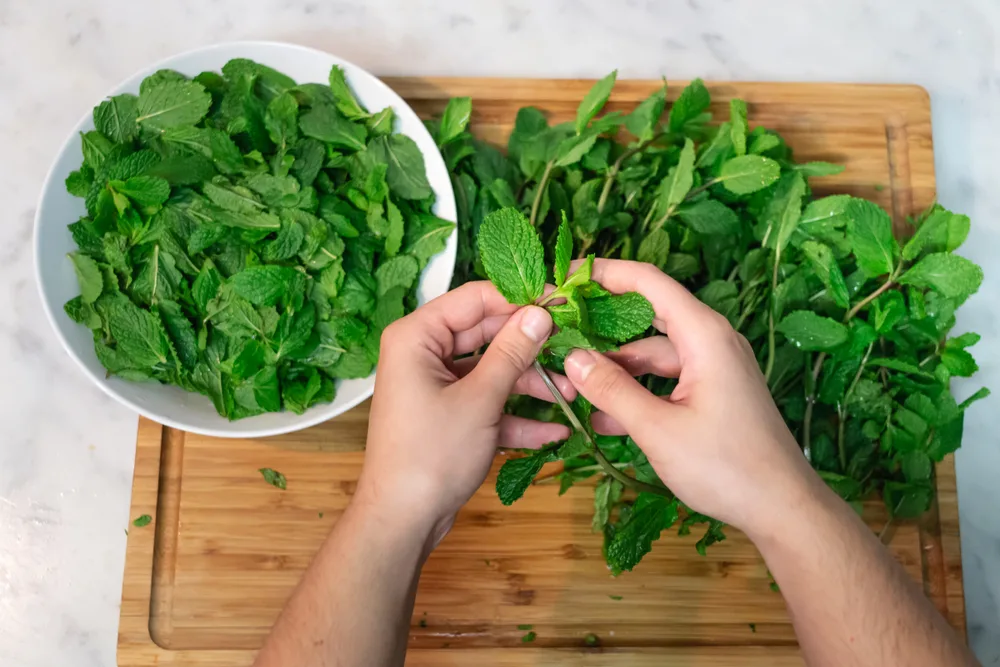
There are three main reasons to grow mint in your garden, or alongside your house. For eating, for drinking and for promoting diversity in the garden.
Within these reasons, and given that you have sought out a variety (or several varieties) of mint that you love, here are 16 more reasons to keep eating, drinking and using mint in ways that are all new to you.
Please, feel free to pass along your favorites!
In the meantime, imagine rolling up a mint leaf, popping it in your mouth and gently massaging it between your teeth.
What do you feel? How does it taste? Would your ideal mint be better suited to pesto or mint sauce, or something entirely different?
1. Basil mint pesto
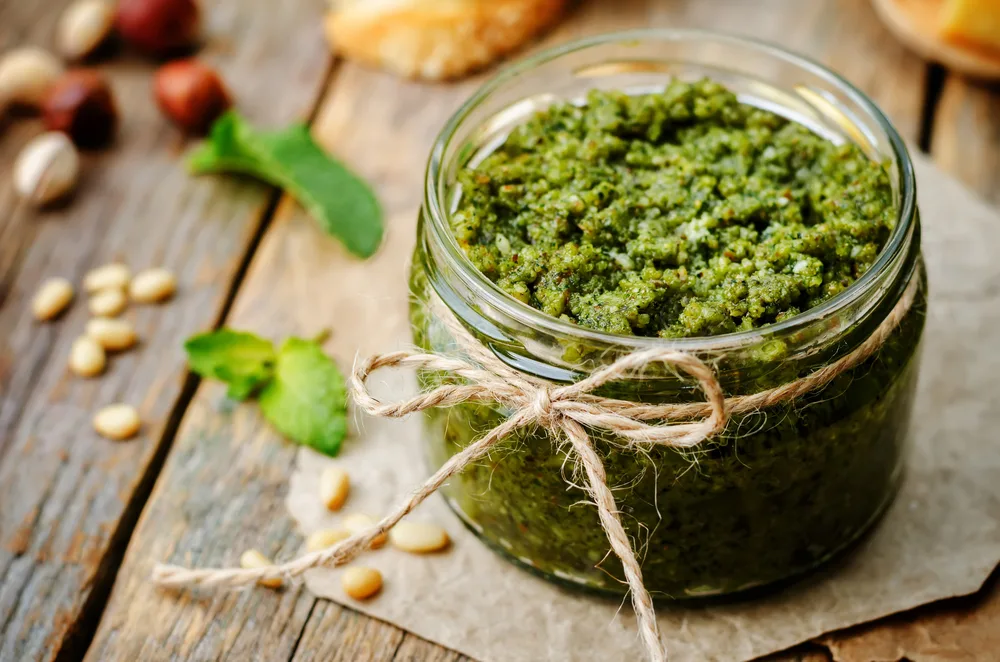
If you happen to grow a ton of basil, chances are good that you are already a fan of pesto. Who isn’t?
Have you ever stopped to consider what that might taste like if you added half a cup of mint leaves and chopped walnuts to the mix?
Superb. That is the correct answer.
2. Coriander-mint chutney
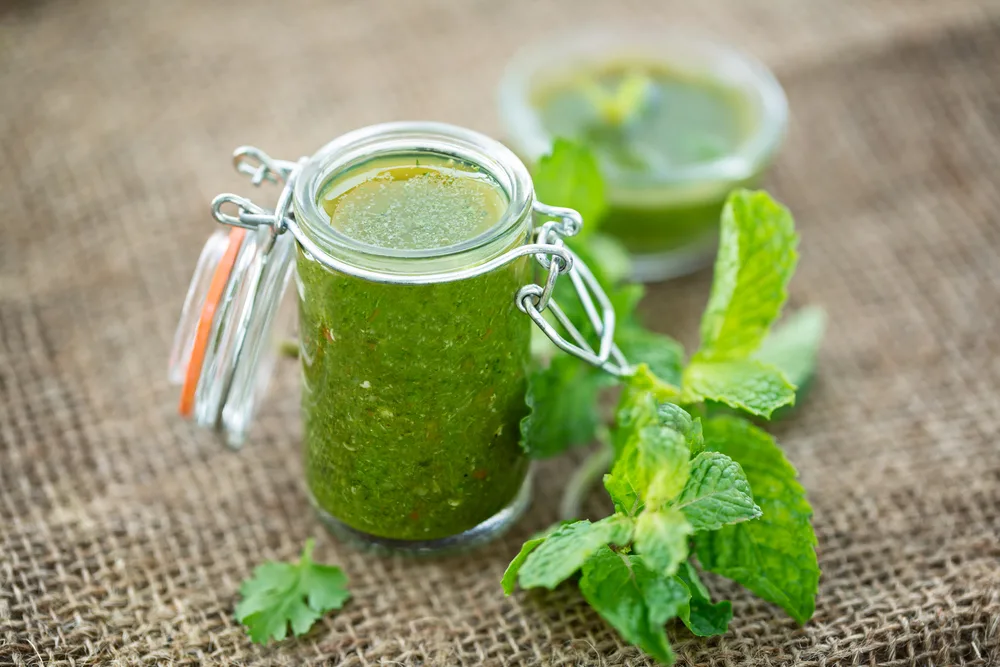
If you have been searching for a completely different way to sample the massive amount of mint from your garden, this reason is for you.
It takes fresh mint leaves, fresh coriander leaves (cilantro), green chilies, ginger, cumin powder and black salt. Fresh lemon juice is optional, and if you happen not to have black salt, any salt will do.
Blend all ingredients to a smooth paste, then serve with your favorite Indian foods.
It is lean, green and powerfully flavorful. You simply must try it this season.
Mint Coriander Chutney @ Veg Recipes of India
3. Mint sauce
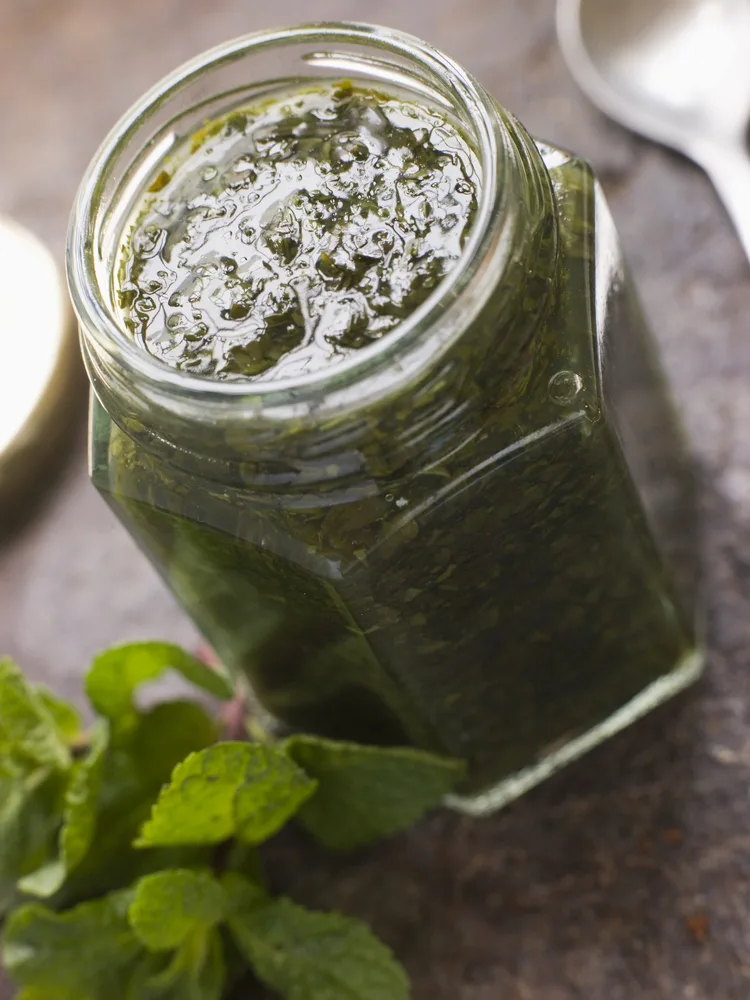
The first time I ever tried mint sauce was in England, where it remains part of a traditional Sunday roast to this day.
It is extremely easy to make, contains few ingredients (fresh mint leaves, white wine vinegar and sugar) and perfectly complements roast lamb.
If you are wanting to try a classic British/Irish condiment, mint sauce is your go-to recipe.
Easy Real British Mint Sauce @ the Spruce Eats
4. Fresh mint ice cream
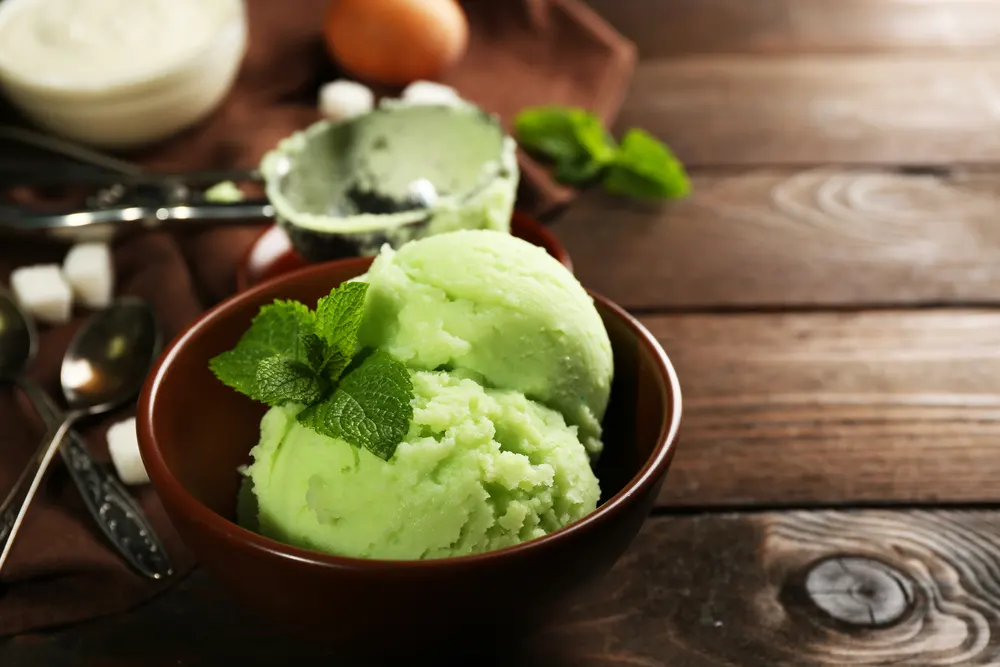
If you aren’t one for mint sauce, here is another, sweeter suggestion for using up some garden mint – mint ice cream.
With an ice cream maker and all the ingredients to make it happen, you can sit in your own little minty world as you eat spoonful after delicious spoonful of creamy goodness.
Why buy store-bought, when it can be made so much healthier, fresh and flavorful mint ice cream at home?
Fresh Mint Ice Cream @ Cookie and Kate is the recipe you need.